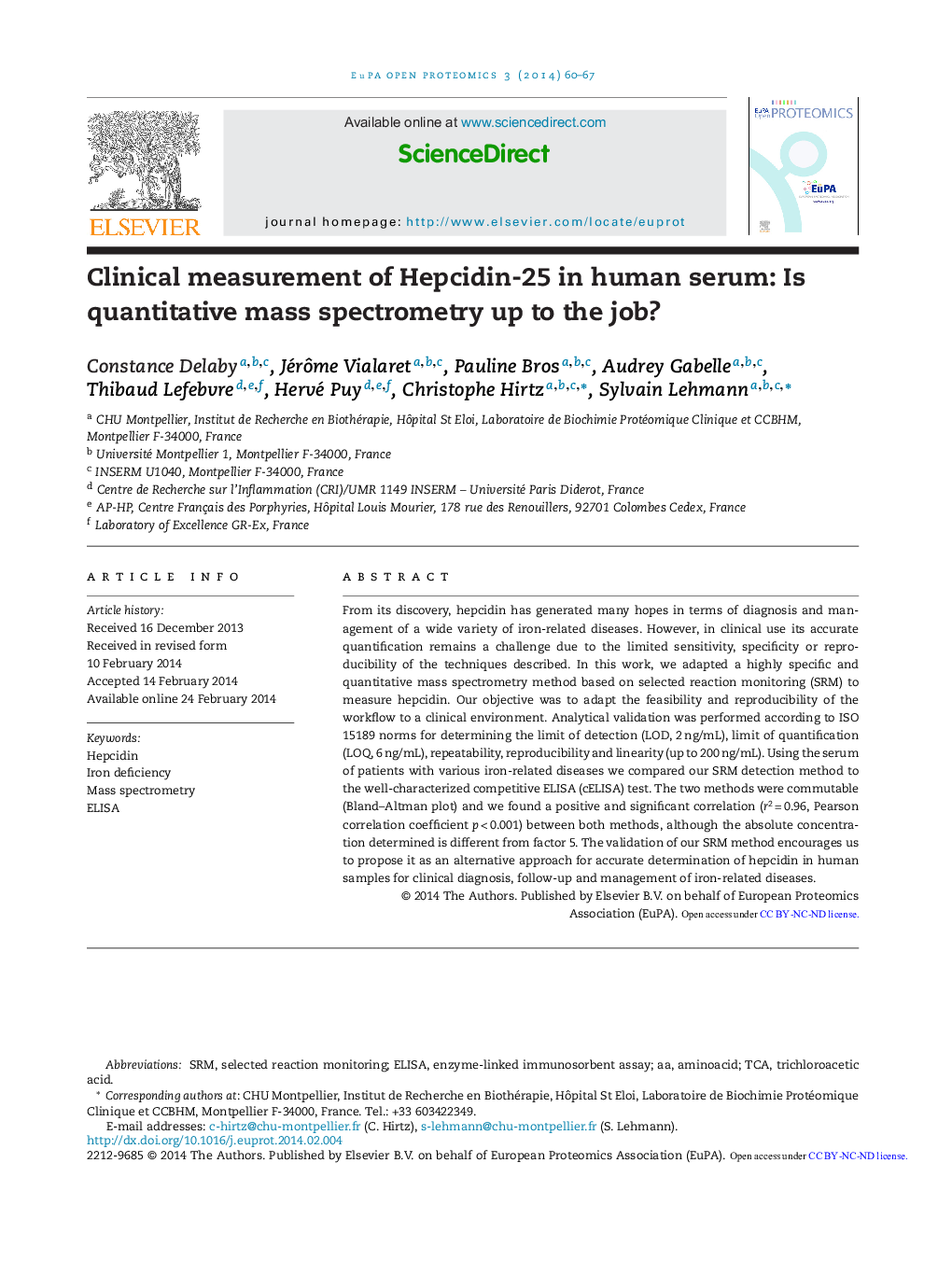| Article ID | Journal | Published Year | Pages | File Type |
|---|---|---|---|---|
| 1182989 | EuPA Open Proteomics | 2014 | 8 Pages |
From its discovery, hepcidin has generated many hopes in terms of diagnosis and management of a wide variety of iron-related diseases. However, in clinical use its accurate quantification remains a challenge due to the limited sensitivity, specificity or reproducibility of the techniques described. In this work, we adapted a highly specific and quantitative mass spectrometry method based on selected reaction monitoring (SRM) to measure hepcidin. Our objective was to adapt the feasibility and reproducibility of the workflow to a clinical environment. Analytical validation was performed according to ISO 15189 norms for determining the limit of detection (LOD, 2 ng/mL), limit of quantification (LOQ, 6 ng/mL), repeatability, reproducibility and linearity (up to 200 ng/mL). Using the serum of patients with various iron-related diseases we compared our SRM detection method to the well-characterized competitive ELISA (cELISA) test. The two methods were commutable (Bland–Altman plot) and we found a positive and significant correlation (r2 = 0.96, Pearson correlation coefficient p < 0.001) between both methods, although the absolute concentration determined is different from factor 5. The validation of our SRM method encourages us to propose it as an alternative approach for accurate determination of hepcidin in human samples for clinical diagnosis, follow-up and management of iron-related diseases.
